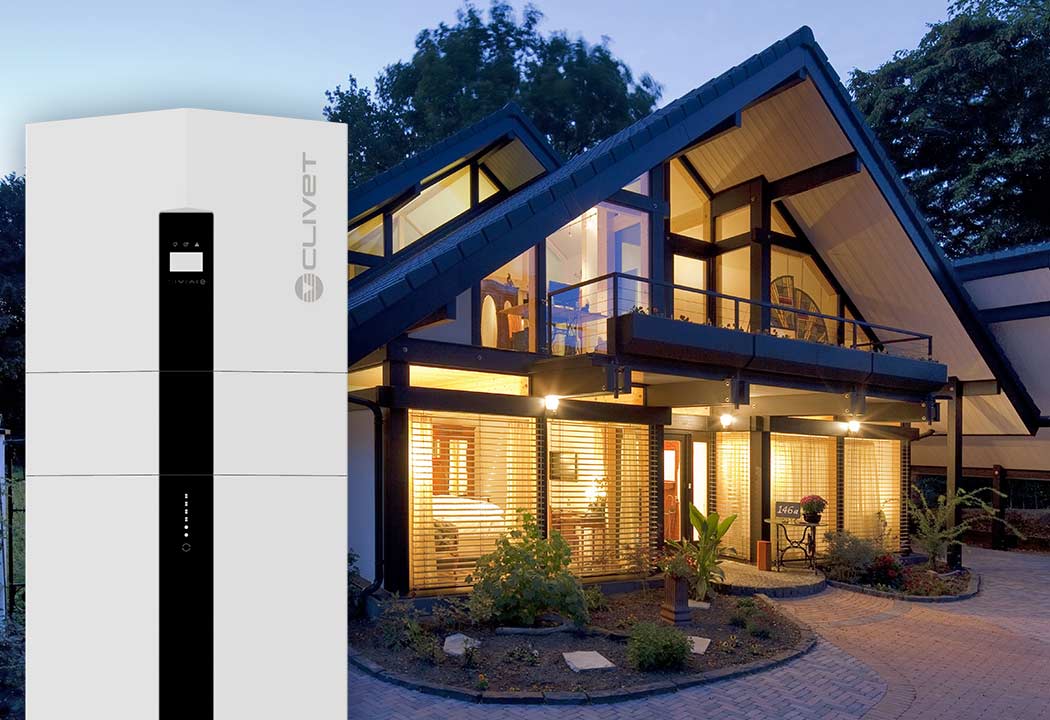As we have seen, the storage system is perfect for a photovoltaic system in a home or condominium, as it allows you to use the electricity produced during the day either in the course of the evening or at night. But is this system also a valid solution for companies? The answer is yes. As long as the company's energy needs do not coincide with the times when the photovoltaic system is producing most of its energy. Here's an example. If a company needs energy at weekends, or uses a lot of electricity during the evening or at night, then installing an accumulator system would certainly be a great way to reduce its energy bills.
Photovoltaic system with accumulator and heat pump
By installing photovoltaic panels, you can produce clean, renewable energy to meet the needs of your business; and by combining this with an accumulator system you can further reduce your dependence on the power grid, using the energy that is stored in the batteries when the plant is not in operation.
So why not use this energy to operate a heat pump, so that your company has an excellent heating/air conditioning system, as well as a supply of domestic hot water? Heat pumps require electricity, which accounts for about 25% of their energy needs; however, the remaining 75% of the energy they need to operate comes from renewable sources, such as outside air, groundwater or underground heat.
If you combine the heat pump with a photovoltaic system, you can then power it with the free energy produced by the solar panels, avoiding the consumption of fossil fuels typically used by boilers, and making the whole system even more virtuous.

 United Arab Emirates
United Arab Emirates  +971 (0) 4501 5840
+971 (0) 4501 5840  info@clivet.ae
info@clivet.ae  France
France  Germany
Germany  +49 40 325957-190
+49 40 325957-190  United Kingdom
United Kingdom  India
India  Russia
Russia  South East Europe
South East Europe 






